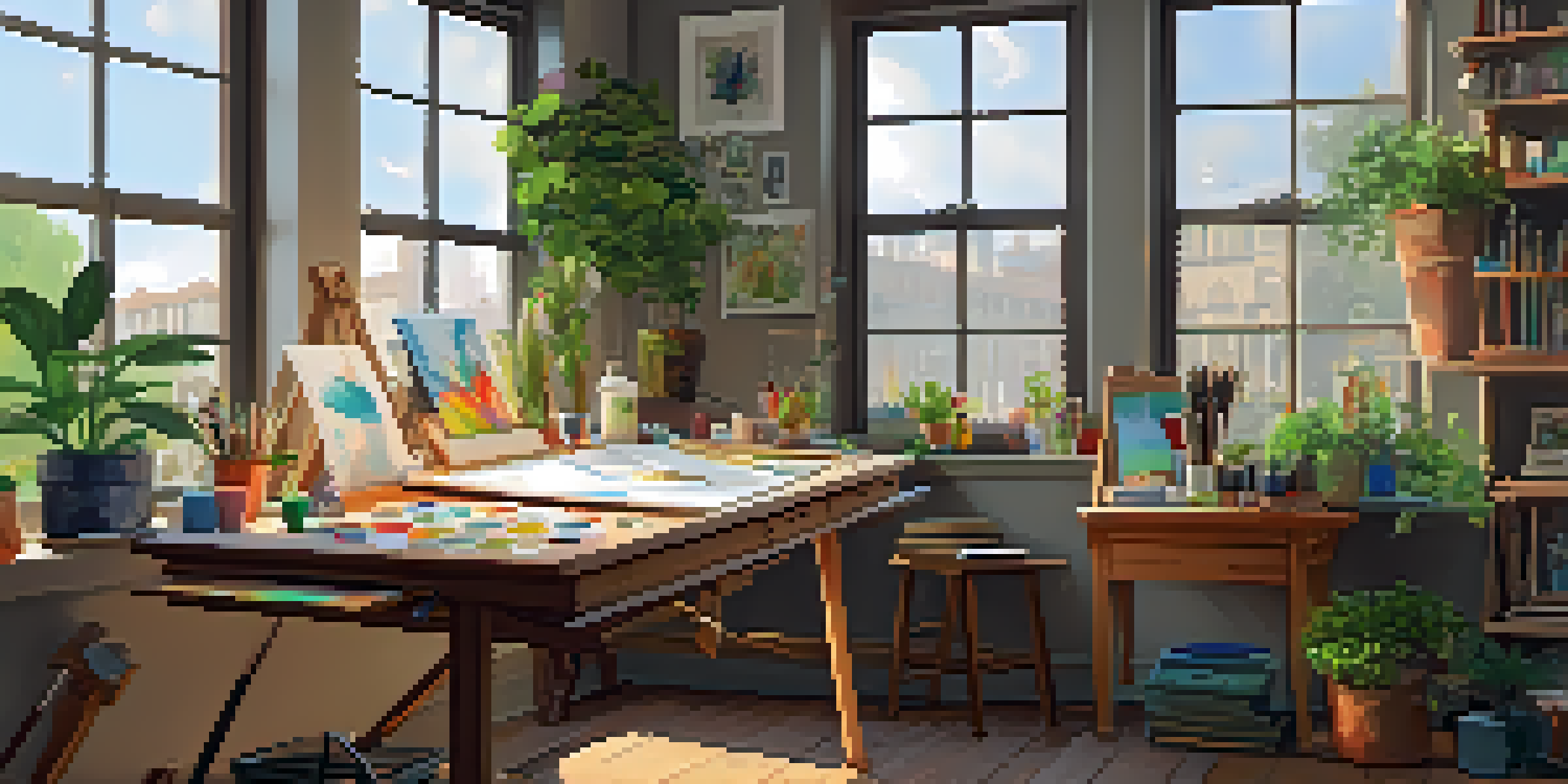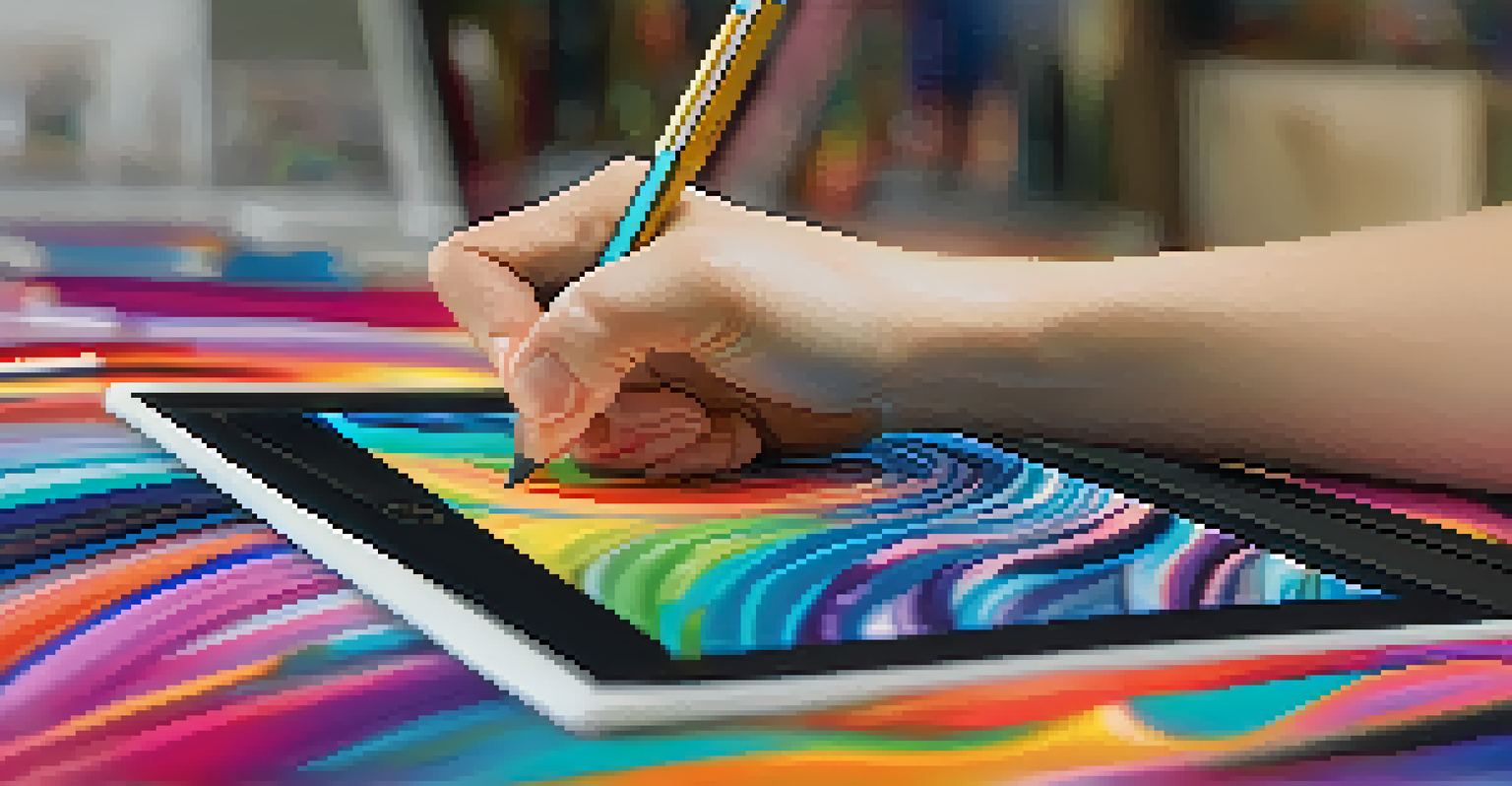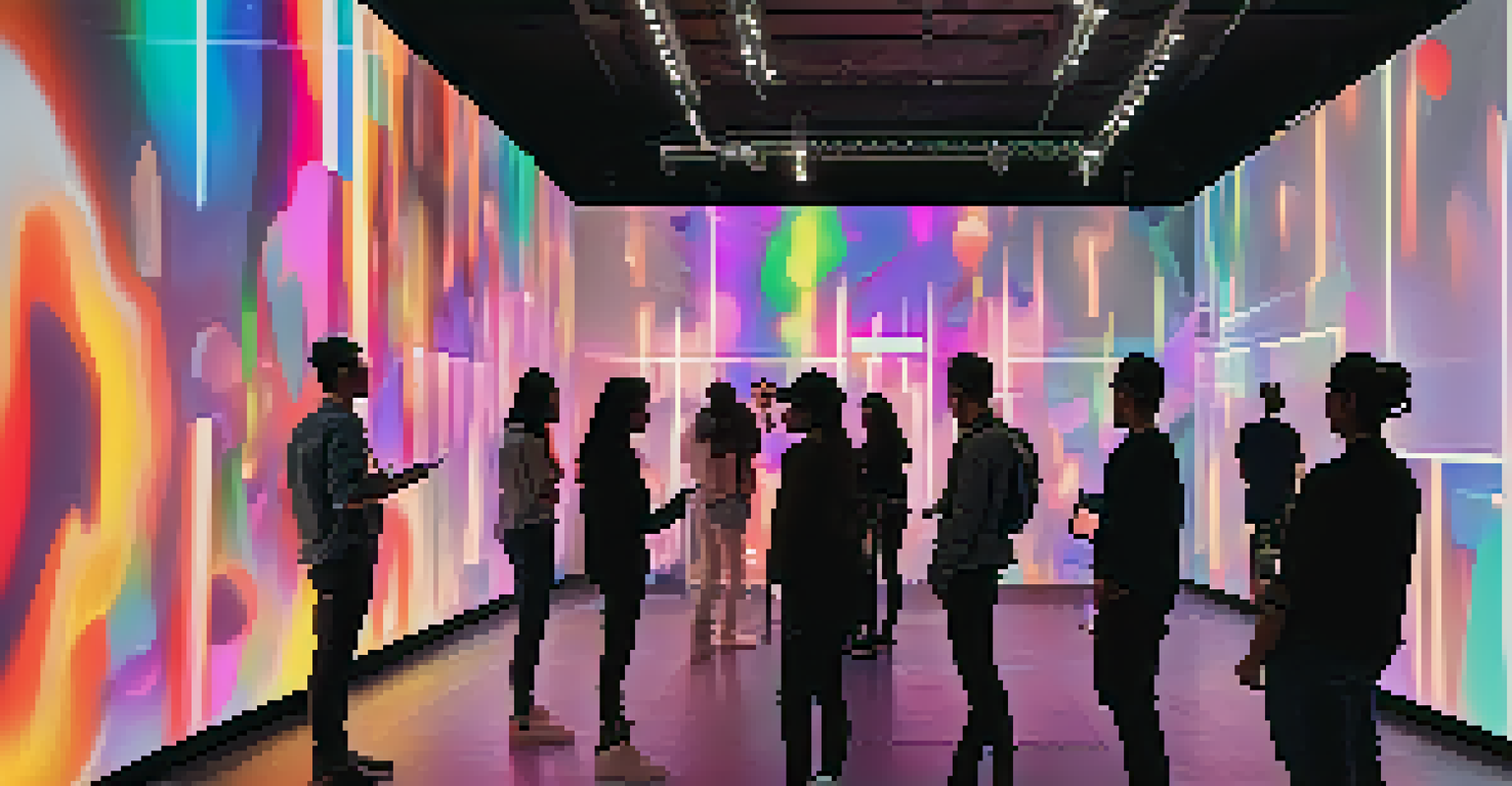The Evolution of Art in the Age of Consumer Technology

The Shift from Traditional to Digital Art Forms
The art world has witnessed a significant transformation with the advent of consumer technology. Traditional art forms, like painting and sculpture, now coexist with digital mediums like graphic design and 3D modeling. This shift not only broadens the definition of what constitutes art but also challenges artists to adapt their skills to new tools and platforms.
Art is not what you see, but what you make others see.
For example, a painter may now incorporate digital elements into their work, blurring the lines between physical and digital art. Additionally, platforms such as Instagram and Pinterest allow artists to showcase their work to a global audience, creating new opportunities for exposure and collaboration. As a result, artists are no longer confined to galleries; their studios can be anywhere, even at home.
This evolution encourages a diverse range of artistic expressions, leading to more inclusive and varied art scenes. Artists from different backgrounds can easily share their unique perspectives, enriching the cultural tapestry of the art world. Ultimately, the fusion of traditional and digital art forms signals a new era, where creativity knows no bounds.
The Role of Social Media in Art Distribution
Social media has revolutionized the way art is shared and consumed. Platforms like Instagram and TikTok have become virtual galleries, enabling artists to reach wider audiences without the need for traditional gatekeepers like galleries and curators. This democratization of art allows anyone with a smartphone and an internet connection to share their creative work.

As a result, artists can engage directly with their audience, receiving instant feedback and building a loyal following. This interaction can be invaluable, as it helps artists refine their work and develop their unique voice. Moreover, it fosters a sense of community among artists and art lovers, bridging geographic divides and creating a global conversation around creativity.
Art's Digital Transformation
The art world is evolving as traditional forms merge with digital mediums, expanding creative possibilities and accessibility.
However, this shift also presents challenges, such as the pressure to maintain an online presence and the risk of art being reduced to mere trends. Despite these hurdles, social media remains a powerful tool, allowing artists to innovate and connect in ways that were unimaginable just a few decades ago.
Consumer Technology: Tools for Artistic Innovation
The tools available to artists have evolved dramatically thanks to consumer technology. Software like Adobe Creative Suite and platforms such as Procreate have made digital art creation accessible to everyone, from hobbyists to professionals. These tools not only enhance creativity but also streamline the artistic process, allowing for more experimentation and quicker iterations.
The artist is nothing without the gift, but the gift is nothing without work.
Additionally, advancements in hardware, such as graphics tablets and virtual reality (VR) headsets, provide artists with even more ways to express their creativity. For instance, VR art allows creators to immerse themselves in a three-dimensional space, offering a unique perspective that traditional mediums cannot replicate. This blend of technology and art opens up endless possibilities for innovation.
As artists adapt to these new tools, they push the boundaries of what is possible, leading to groundbreaking works that challenge conventional aesthetics. The integration of technology into the artistic process invites a new generation of creators to explore and redefine the essence of art, making it an exciting time to be involved in the art world.
Accessibility: Art for Everyone
Consumer technology has played a crucial role in making art more accessible to the public. Online platforms and digital galleries allow anyone to explore and appreciate art without the limitations of geography or financial barriers. This accessibility fosters a culture of inclusivity, where more voices can be heard and celebrated within the art community.
Moreover, educational resources, such as online tutorials and webinars, empower aspiring artists to learn and develop their skills at their own pace. This wealth of information democratizes artistic education, allowing individuals from diverse backgrounds to pursue their passion for art. As a result, we see a broader spectrum of artistic styles and narratives emerging.
Social Media's Art Revolution
Social media platforms have democratized art distribution, enabling artists to connect directly with audiences and build communities.
The notion that art is only for the elite is slowly fading, replaced by a belief that creativity belongs to everyone. This shift not only enriches the art world but also encourages individuals to express themselves, contributing to a vibrant and dynamic cultural landscape.
Art and Consumerism: A Double-Edged Sword
The relationship between art and consumer technology is complex, often reflecting the broader trends of consumerism. While technology can enhance artistic expression, it also has the potential to commodify art, reducing it to a product for sale. This blurring of lines raises important questions about the value of art and the motivations behind its creation.
For instance, the rise of print-on-demand services allows artists to sell their work more easily, but it can also lead to an overwhelming focus on commercial success. As artists navigate this landscape, they must find a balance between creative integrity and marketability. The challenge lies in maintaining authenticity while adapting to the demands of a consumer-driven society.
Ultimately, this duality forces artists to confront their relationship with technology and its impact on their work. By embracing the positives while being mindful of the negatives, artists can carve out a space where creativity flourishes without succumbing to the pressures of consumerism.
The Future of Art: Trends to Watch
As we look to the future, several trends are emerging that will continue to shape the evolution of art in the age of consumer technology. One notable trend is the increasing use of artificial intelligence (AI) in creative processes. Artists are beginning to collaborate with AI tools to generate new ideas, pushing the boundaries of creativity in exciting ways.
Another trend is the rise of immersive experiences, such as augmented reality (AR) installations and interactive art. These technologies allow audiences to engage with art in ways that were previously unimaginable, creating a more participatory experience. As artists experiment with these new formats, we can expect to see a redefinition of the viewer's role in the art experience.
Innovation Through Technology
Advancements in consumer technology empower artists to explore new tools and methods, fostering innovative and diverse artistic expressions.
Finally, sustainability in art is becoming a focal point as artists seek to address environmental concerns through their work. This shift toward eco-friendly practices not only reflects societal values but also inspires creativity in finding innovative methods to create art responsibly. The future of art is bright, promising a landscape rich with innovation, collaboration, and consciousness.
Conclusion: Embracing Change in the Art World
The evolution of art in the age of consumer technology is a testament to the adaptability and resilience of creators. As artists embrace new tools, platforms, and ideas, they continue to redefine what art means in our rapidly changing world. This journey reflects not only advancements in technology but also shifts in cultural attitudes, making art more inclusive and accessible.
While challenges remain, the opportunities for innovation and collaboration are abundant. Artists are at the forefront of this transformation, using technology to amplify their voices and connect with audiences globally. By embracing change, the art world can thrive and evolve, reflecting the diverse experiences and perspectives of our society.

As we move forward, it’s essential to celebrate the intersection of art and technology, acknowledging the ways they inspire and challenge each other. In doing so, we can foster a vibrant art community that welcomes everyone to participate, appreciate, and create, ensuring that the future of art is as dynamic and diverse as the world we live in.